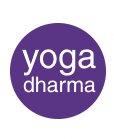DYNAMIC ALIGNMENT YOGA, WHAT IS IT?
Dynamic alignment will radically reshape your thinking about how you align yourself in a yoga asana.
One of the greatest pitfalls for a regular yoga practitioner is becoming accustomed to a practice. We move easily through our sequence (krama) feeling content with ourselves that we have kept up our practice. Although this level of practice will still have many benefits, it’s not yoga!
The body and mind are linked with one shaping the other. If our body is not challenged the mind is not changed, and vice versa. Ultimately hatha yoga is changing the mind through a system, or techniques such as asana. As opposed to sutric yoga which is changing the mind through the mind. If our asana is static, there is no transformation.
RADICAL TRANSFORMATION
Dynamic alignment works on a physical level with the many benefits that come from improved alignment, strength and flexibility. But perhaps more importantly it will have a dramatic effect on how we think about ourselves, which ultimately effects the way we perceive the world around us.
Dynamic alignment is something we all can do, and it does not require any special equipment or props. It’s simply how we arrange ourselves in an asana.
Dynamic alignment works with all asanas and is something every practitioner can use to radically transform a yoga practice.
HOW DOES DYNAMIC ALIGNMENT YOGA WORK?
Dynamic alignment works by creating resistance. This can be by using the space around us to create resistance between the body and a wall for instance. We can also create resistance within ourselves. This works by creating a force with a group of muscles which is counteracted by another group of muscles.
IMAGERY
If creating resistance within the body, we can use Dandasana as an example. The image below is I would say perfectly aligned. Unfortunately, this will not be the case for most of us.
RESULTS SPEAK FOR THEMSLEVES
Imaging the low back slightly rounded and the chest and shoulders drooping. To begin realigning the body lifting the top of the chest will resolve the drooping shoulders etc. but may overwork thoracic spine. The shoulder blades will come together with the thoracic spine becoming overly lordotic. To counter this mentally grab the small lower ribs and create a muscular action to pull them in and down. Repeat this action by constantly lifting the top of the chest, with the opposite action of the lower ribs pulling in and down. The effects will speak for themselves.

BANDHAS
Hatha yoga talks of bandhas, which can be linked to muscular action, but ultimately, they work on the subtle body.
An example of a muscular action that is created by a bandha is hasta bandha. Hasta bandha means hand bandha. The muscular action created when applying hasta bandha is an isometric muscle contraction.
An isometric muscle contraction is the muscle contracting without getting longer or shorter. The result is that joints are protected and stabilised by the muscles around them working.
HASTA BANDHA FOR DYNAMIC ALIGNMENT YOGA
Using hasta bandha means creating a dynamic force between the palms of the hands and the surface they are connecting with.
The fingers will be divided evenly with the pressure between the hands and the surface evenly spread. Keep the roots of the fingers grounded so the hands are not cupped. Now push away with the palms while simultaneously pulling the tops of the hands up and back. The effect will be a dynamic activation of muscles and alignment of the hands, arms and shoulders.
DYNAMIC ALIGNMENT YOGA
Dynamic alignment uses precise and controlled movements which requires total mental engagement. An asana practice is not just about performing a sequence of postures, it requires focused attention to be a complete practice. This is called Drishti in yoga and can also be interpreted as pratyahara. If the mind is wandering it is just a physical practice.
BRIEF OVERVIEW OF DYNAMIC ALIGNMENT YOGA
This is just a sample of how Dynamic alignment works. It requires a complete rethink of a practice and a review of each asana within a practice.
CONCENTRATION AND EFFORT
The journey will take all your concentration and involves a lot of effort. The results are a practice that will be transformed physically and emotionally.
